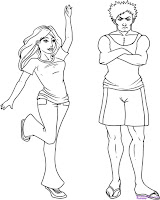We are daily bombarded by requests, actions, interrupts. The media pressure us with what we should possess or buy, how we should look, what to eat ... We are pressed by our surroundings, neighbors, friends to ‘comply’ with standard of living they value. Our bosses tell us when and what to do no matter the hour of a day or day of the week. We are (always) connected – if not, right now we are looking for wifi!
Is this the life we want?
Some adhere to it others aim to different lifestyle. Nevertheless, for many of us the relaxation represents zoning out in front of a TV at the end of a stressful day. Does/could this reduce the accumulated stress?
No.
Known from ancient times to effectively combat stress is that we need to activate the whole body's natural relaxation response.
How we do it?
There are numerous marketing campaigns telling us to try three, seven, eight … ways of relaxing techniques that are readily (commercially) available?
Do those techniques work? Likely not!
What then?
Stress is necessary ‘part’ of life. One needs it for creativity, learning and, mostly in ancient times, to survive. Why, then, such a fuss about it?
 We are all probably aware that stress is harmful when it becomes overwhelming and interrupts the healthy state of equilibrium of our body chemicals through nervous system. Our body and our nervous system are flooded with chemicals which prepare us for ‘fight or flight’. While stress response in emergency situations when quick action is necessary could be lifesaving, it wears our body down when constantly (daily) activated. Sadly, overwhelming stress has become an increasingly ‘common occurrence’ in our lives.
We are all probably aware that stress is harmful when it becomes overwhelming and interrupts the healthy state of equilibrium of our body chemicals through nervous system. Our body and our nervous system are flooded with chemicals which prepare us for ‘fight or flight’. While stress response in emergency situations when quick action is necessary could be lifesaving, it wears our body down when constantly (daily) activated. Sadly, overwhelming stress has become an increasingly ‘common occurrence’ in our lives.We should aim to control the impact of stress or to reduce it. And here the relaxation techniques come in. They are kind of brakes on our over heightened state of readiness and bring our body and mind back into a state of equilibrium.
Now, let’s move from ‘what’ to ‘how’.























